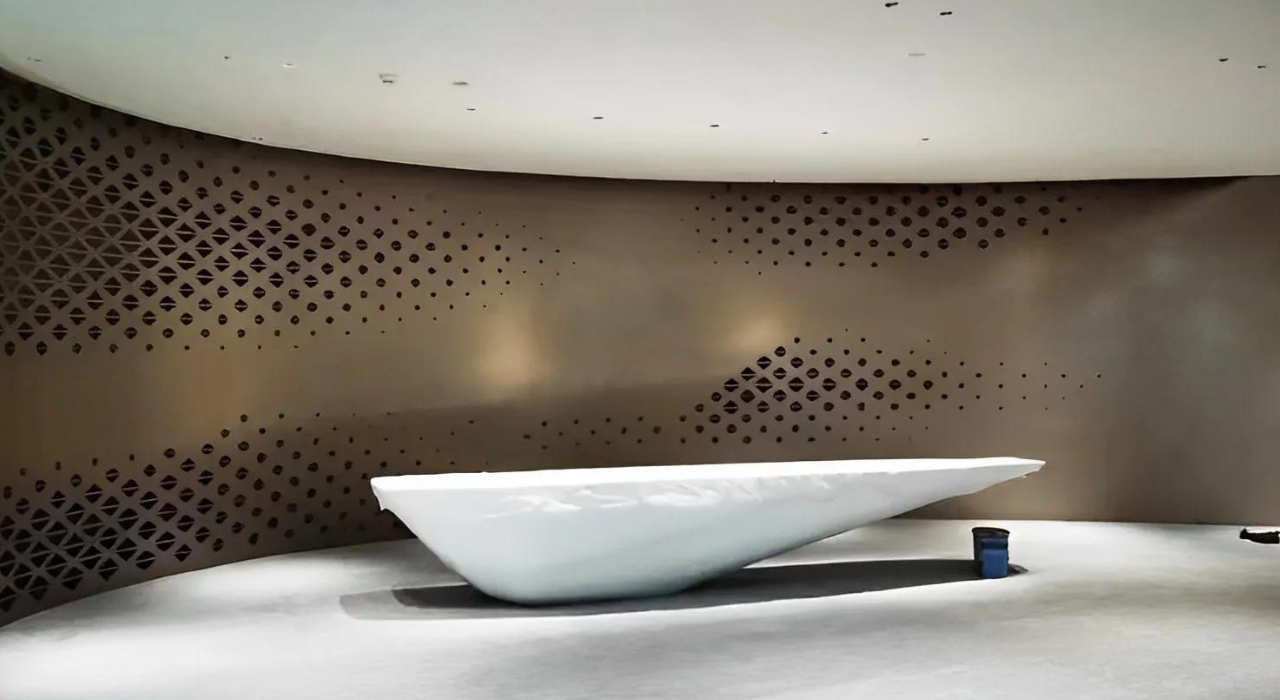Aluminum facade cladding is essential for several motives in contemporary architecture. First, it gives sturdiness and weather resistance, protects buildings from harsh factors, and maintains structural integrity through the years. Its lightweight nature makes set up less complicated and extra cost-powerful compared to different materials, reducing construction time and labor expenses.
Aluminum is also noticeably flexible, allowing for a selection of aesthetic alternatives through exclusive finishes and colorations, enhancing architectural design flexibility. Furthermore, it's miles environmentally pleasant, being fully recyclable and energy-efficient each in production and use. Those qualities make aluminium facade cladding a favored desire for sustainable and aesthetically attractive building exteriors globally.
Several Ways Aluminium Facade Cladding Impact Energy Efficiency
Aluminum facade cladding can impact energy performance in several methods
Insulation
Aluminum facade cladding complements building insulation by integrating superior substances at the back of its panels. This insulation minimizes heat transfer among interior and outdoor areas, stabilizing indoor temperatures for the year. Via lowering warmth loss in iciness and heat benefit in the summer season, aluminum cladding contributes considerably to power performance.
Reflective coatings on aluminum surfaces in addition enhance its thermal overall performance with the aid of deflecting solar radiation, thereby lowering cooling demands in warmer climates. These properties not only improve occupant consolation but also decrease reliance on mechanical heating and cooling structures, ultimately decreasing power intake and operational costs for buildings.
Reflectivity
Aluminum facade cladding can be engineered with reflective coatings that enhance its solar reflectance properties. Those coatings help to reflect a considerable part of sun radiation far away from the building, lowering the quantity of warmth absorbed through the facade. Via minimizing solar heat advantage, reflective aluminum cladding contributes to decreasing cooling loads and electricity intake in warm climates.
This belonging improves the general thermal consolation within buildings while helping energy-efficient design strategies. Reflective aluminum surfaces additionally mitigate the urban heat island effect by way of reducing the heat absorbed and radiated back into the environment, promoting an extra-sustainable urban environment.
Sturdiness and Maintenance
Aluminum facade cladding is famous for its durability and occasional upkeep requirements. The material is corrosion-resistant, making it appropriate for various environmental conditions, together with coastal and concrete regions. Its robustness minimizes the need for common maintenance or replacements, lowering lifecycle costs and operational disruptions.
Routine cleansing and occasional inspections are usually sufficient to hold aluminum cladding's look and performance over its long lifespan. This durability no longer only ensures aesthetic durability but also supports sustainable construction practices with the aid of minimizing material waste and associated environmental effects throughout the building's lifecycle.
Airtightness
Aluminum facade cladding systems contribute to constructing airtightness, which is important for power efficiency and indoor comfort. Well-hooked-up aluminum panels create a barrier that reduces air leakage via the building envelope. This hermetic seal prevents drafts and ingress of external pollutants, improving indoor air and occupant comfort.
More suitable airtightness additionally optimizes the overall performance of HVAC structures by minimizing power losses related to out-of-control air movement. On average, aluminum cladding's ability to enhance a construction's airtightness supports sustainable production practices, reduces strength consumption, and contributes to a healthier indoor environment.
Design Flexibility
Aluminum facade cladding gives splendid design flexibility, allowing architects to obtain various aesthetic and useful objectives. The cloth's versatility allows it to be formed, bent and formed into various profiles and configurations, accommodating innovative architectural visions. From glossy modern facades to tricky designs, aluminum cladding integrates seamlessly with different building styles and issues.
Its ability to guide included features like solar panels and shading devices similarly complements its functional adaptability. This design versatility now not only complements the visible appeal of homes but also facilitates progressive solutions for power efficiency and sustainable design practices in modern production tasks.
Conclusion
Aluminum facade cladding stands as a versatile and sustainable preference for cutting-edge buildings, improving energy performance via superior insulation, reflectivity, and sturdiness. Its layout flexibility not only supports architectural creativity but also promotes lengthy-term environmental stewardship via reducing strength consumption and preservation needs. As a cornerstone of sustainable construction, aluminum cladding keeps setting new standards for efficient, aesthetically desirable constructing envelopes.


